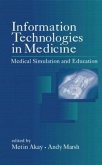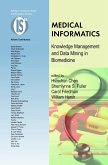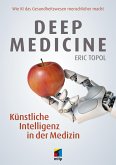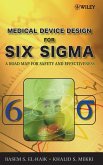Virtual reality is a combination of human interface, graphics, sensor technologies, high performance computing, and networking. It allows the user to interact with the artificial environment created by computers. In medical education, the role of virtual reality is in the area of visualization focusing on the use of three dimensional interactive graphics to give the student a much better feeling for and understanding of anatomy than can be gained by looking at two dimensional pictures or by reading a book.
A comprehensive survey of technological developments in Virtual Reality for use in medical education and simulated procedures
Medicine and the biological sciences have long relied on visualizations to illustrate the relationship between anatomic structure and biologic function. The new multidimensional imaging modalities are powerful counterparts to traditional forms of observation-surgery, postmortem examination, or extensive mental reconstruction. VR technologies have reached unimagined levels of sophistication and utility, giving physicians and students new avenues for planning and practicing surgery and diagnostics.
The two volumes of Information Technologies in Medicine thoroughly explore the use of VR technology in three-dimensional visualization techniques, realistic surgical training prior to patient contact, and actual procedures in rehabilitation and treatment, including telemedicine and telesurgery. Editors Akay and Marsh have brought together all the available information on the subject of VR technologies in medicine and medical training to create the first comprehensive guide to the state of the art in medicine for use by students, doctors, and researchers.
Volume I is devoted to the fundamentals of these new information technologies and their many applications in medical education and practice, especially in the area of medical and surgical simulations. Coverage includes:
_ Virtual environment technologies
_ The future of VR technologies in the twenty-first century
_ Perceptualization of biomedical data
_ Visualization in teaching anatomy
A comprehensive survey of technological developments in Virtual Reality for use in medical education and simulated procedures
Medicine and the biological sciences have long relied on visualizations to illustrate the relationship between anatomic structure and biologic function. The new multidimensional imaging modalities are powerful counterparts to traditional forms of observation-surgery, postmortem examination, or extensive mental reconstruction. VR technologies have reached unimagined levels of sophistication and utility, giving physicians and students new avenues for planning and practicing surgery and diagnostics.
The two volumes of Information Technologies in Medicine thoroughly explore the use of VR technology in three-dimensional visualization techniques, realistic surgical training prior to patient contact, and actual procedures in rehabilitation and treatment, including telemedicine and telesurgery. Editors Akay and Marsh have brought together all the available information on the subject of VR technologies in medicine and medical training to create the first comprehensive guide to the state of the art in medicine for use by students, doctors, and researchers.
Volume I is devoted to the fundamentals of these new information technologies and their many applications in medical education and practice, especially in the area of medical and surgical simulations. Coverage includes:
_ Virtual environment technologies
_ The future of VR technologies in the twenty-first century
_ Perceptualization of biomedical data
_ Visualization in teaching anatomy








